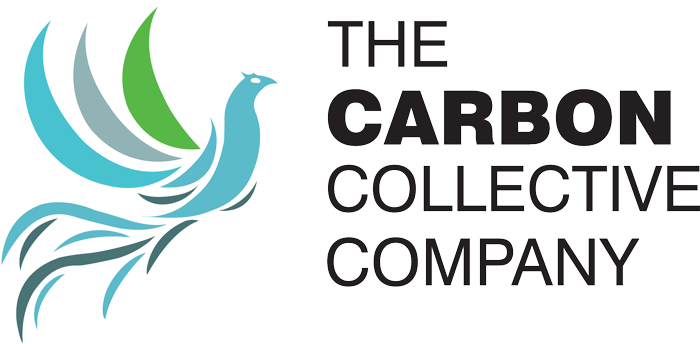Share:
What is CDP Reporting?
CDP, formerly known as the Carbon Disclosure Project, is a non-profit organisation that runs the global disclosure system for investors, companies, cities, states and regions to manage and disclose their environmental impact. The world’s economy looks to CDP reporting as the gold standard of environmental reporting with the richest and most comprehensive dataset on corporate and city action.
CDP works with companies to catalyse urgent action towards a sustainable net-zero, deforestation-free and water-secure world. Companies can disclose their environmental information through CDP’s full corporate and SME corporate questionnaires which are designed to evaluate governance, strategies, targets & performance, risk & opportunity management, quantitative metrics, and supply chain engagement.
If a company chooses to make its score public, it will be listed on the CDP website in the public scores database. CDP investor signatories and supply chain members who requested the company’s disclosure can access the scores of companies who opt to keep their scores private.
Why is CDP important?
By disclosing through CDP, companies are demonstrating their commitment to environmental stewardship whilst identify risks and opportunities to improve. CDP reporting promotes environmental transparency with the goal of driving impact against climate changes. Why does it matter:
- The steps companies take to reduce their environmental impact can result in reducing costs, such as cutting waste and energy use, often deliver significant cost savings.
- The platform is for companies to identify environmental risks and opportunities, reduce operating costs, and enhance their reputation – all of which can deliver tangible financial benefits.
- Align with relevant ESG disclosure frameworks including Task Force on Climate-related Financial Disclosures (TCFD), S&P Global Corporate Sustainability Assessment (S&P CSA), amongst others.
- Attract investment, 680+ financial institutions with over $130 trillion in assets use CDP data to inform their investment decisions. Disclosing through CDP can make companies more attractive to sustainability-focused investors.
- Enhance your brand reputation by demonstrating your companies commitment to sustainability and environmental responsibility.
- Join over 22,000 companies representing two-thirds of global market capitalisation who disclosed through CDP in 2024.
What information does CDP request companies to provide?
The CDP questionnaires are designed to gather detailed and standardised environmental data. The questionnaires are segmented, each addressing key environmental themes including climate change, water security, and forests. Questions cover essential topics including governance, strategy, risk management, emissions, and targets. The scope and complexity of the questionnaire may vary by company, ensuring a thorough evaluation of their environmental impact and transparent disclosure to stakeholders.
Who should disclose their CDP?
Most of the world’s largest companies disclose on CDP, and more frequently are now expecting their suppliers to do the same. Reporting to the CDP is not mandatory; companies typically disclose their impacts through the CDP when a stakeholder (E.g. supplier) requests it. When a stakeholder requests company information, the CDP sends a letter to the company’s board on behalf of that investor or customer. If your company is not reporting to CDP yet, it is likely that one of your larger customers in the future will request data via a CDP questionnaire.
What is CDP’s rating structure?
CDP assigns a score based on a four-tiered scoring system:
- Failure (F)
- Disclosure (D/D-)
- Awareness (C/C-)
- Management (B/B-)
- Leadership (A/A-)
How can you improve your existing CDP score?
Start early! Companies should begin familiarising themselves with the questionnaires as soon as they can, this will allow ample amounts of time to gather the necessary data required to complete the process.
Improving a Carbon Disclosure Project (CDP) rating requires a strategic approach, here’s how a company can improve its CDP score:
1. Improve Disclosure and Transparency
To ensure a comprehensive and accurate response to the CDP questionnaire, it is essential to align disclosures with established frameworks such as the Task Force on Climate-related Financial Disclosures (TCFD), the Global Reporting Initiative (GRI), and the Sustainability Accounting Standards Board (SASB). Additionally, increasing data granularity by providing detailed information on Scope 1, 2, and 3 emissions, climate risks, and mitigation efforts will enhance transparency and improve reporting quality.
TIP: Whether it is your emission report or your sustainability report, get it assured by a third-party auditor
2. Strengthen Governance & Strategy
Ensuring climate-related risks and opportunities are overseen at the highest level through board and executive oversight is crucial for effective corporate governance. Additionally, integrating climate risk into corporate strategy by aligning with global climate goals, such as Net-Zero targets or Science-Based Targets (SBTs), strengthens long-term sustainability efforts. Adopting a climate transition plan with concrete steps to achieve climate commitments further demonstrates a company’s dedication to environmental responsibility and resilience.
TIP: Conduct a detailed Climate Risk Assessment covering physical risks and transition risks
3. Enhance Emissions Reduction Efforts
Setting ambitious emissions reduction targets in alignment with the Science-Based Targets initiative (SBTi) is essential for meaningful climate action. Enhancing energy efficiency through measures such as renewable energy sourcing, low-carbon technologies, and sustainable supply chains further supports emission reduction efforts. Additionally, investing in high-quality and verifiable carbon offset projects can help mitigate remaining emissions, ensuring a comprehensive approach to sustainability and climate responsibility.
TIP: Develop and implement an Internal Carbon Pricing (ICP) Mechanism
4. Improve Risk Management & Scenario Analysis
Conducting climate risk assessments is crucial for identifying and understanding potential climate-related risks. Performing scenario analysis to model different climate change scenarios further enhances risk management by preparing for various possible outcomes. Additionally, implementing adaptation and mitigation measures with concrete actions ensures that organizations can effectively manage climate risks and build long-term resilience.
TIP: Develop a Decarbonisation Roadmap and strengthen it with Double Materiality Assessment
5. Strengthen Supply Chain Engagement
Encouraging suppliers to disclose emissions and adopt reduction targets is essential for fostering a more sustainable supply chain. Implementing sustainable procurement policies and collaborating with vendors on greener alternatives further enhances environmental responsibility. Additionally, leveraging CDP’s Supply Chain Program can help improve supplier sustainability practices, driving broader climate action and reducing overall emissions impact.
TIP: Conduct a Supplier risk assessment to unearth opportunities for improvement
6. Stakeholder Engagement & Reporting
Engaging investors, customers, and suppliers is essential to demonstrating a strong commitment to sustainability leadership. Publicly communicating climate efforts through sustainability reports, CDP disclosures, and ESG communications further enhances transparency and accountability, fostering trust and collaboration in the transition to a more sustainable future.
If you’ve disclosed before, addressing the gaps from your previous CDP score is essential. Review your past CDP feedback thoroughly to identify the missing disclosures and improvement areas that were identified.
TIP: Conduct a Materiality Assessment every year or two
Click here, to find out more about the CDP services we provide to support clients disclosing for the first time and those looking to improve their existing score and overall ESG performance.
If you'd like to speak to one of the team about how CDP reporting can benefit your business
Popular Reads











